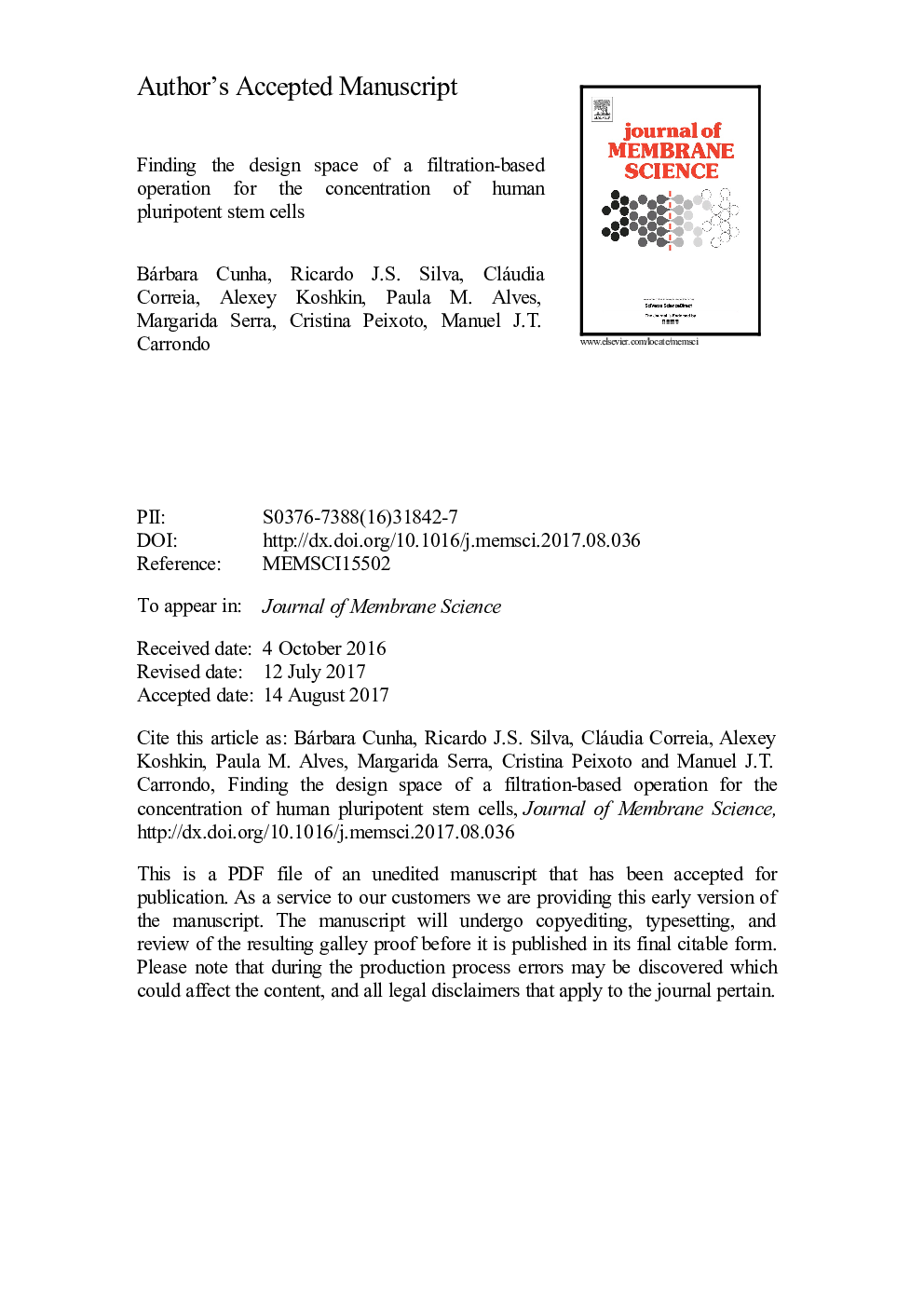| Article ID | Journal | Published Year | Pages | File Type |
|---|---|---|---|---|
| 4988651 | Journal of Membrane Science | 2017 | 25 Pages |
Abstract
Process knowledge for designing robust and reproducible unit operations is essential, especially for complex biological systems. This work describes a shortcut approach for the design of tangential flow filtration for the concentration of human induced pluripotent stem cells (hiPSC), supported by design of experiments. Critical process parameters (CPP) of shear rate, permeate flux and cell load were considered, and their impact on hiPSC recovery yield and viability was studied. A full factorial design confirmed significant interaction effects between all CPP, affecting both responses. The developed statistical model predicted that high shear rate (3000Â sâ1), permeate flux (250 LMH) and medium cell load (2 Ã 106Â cell/cm2) would maximize both cell recovery yield and viability, where over 80% of hiPSC were recovered after a volume reduction factor of 20 with high viability (over 93%). Such conditions were validated experimentally, and by performing a robustness analysis, the success rate of these operating conditions was assessed (65-70%). A parametric study was then conducted, identifying that increasing the shear rate (up to 3370Â sâ1) allowed to achieve the specified requirements for cell recovery yield (>80%) and viability (>90%) in 100% of the cases and no impact in hiPSC's identity, proliferation capacity and pluripotency was observed.
Keywords
Related Topics
Physical Sciences and Engineering
Chemical Engineering
Filtration and Separation
Authors
Bárbara Cunha, Ricardo J.S. Silva, Cláudia Correia, Alexey Koshkin, Paula M. Alves, Margarida Serra, Cristina Peixoto, Manuel J.T. Carrondo,
